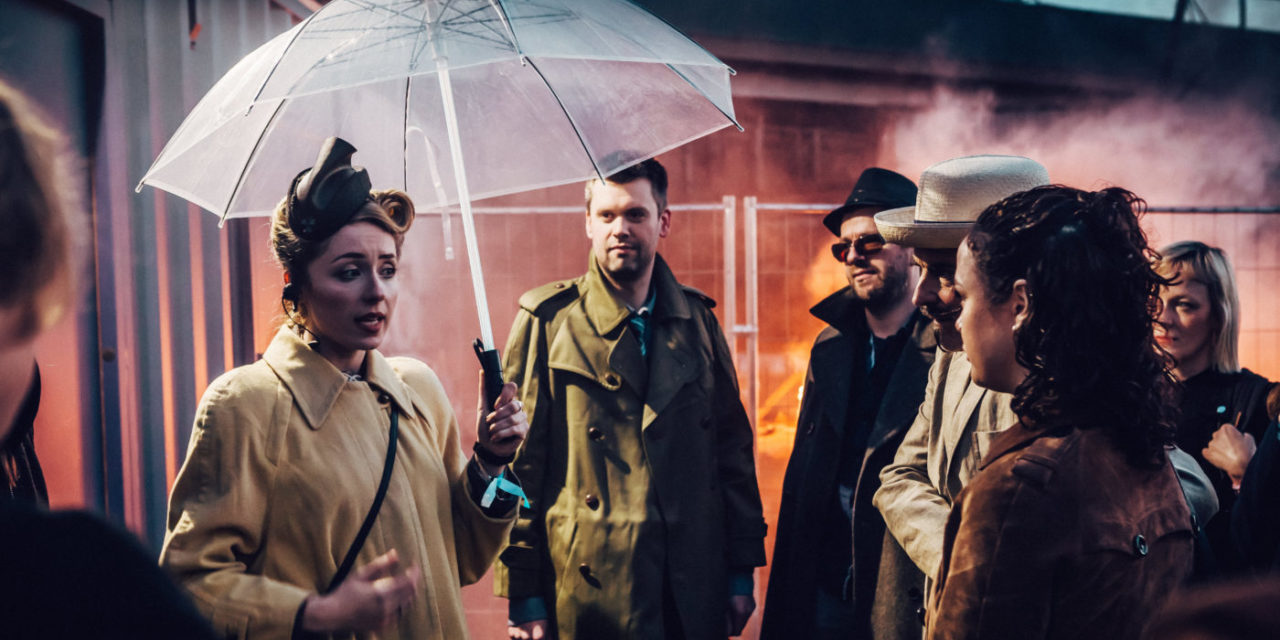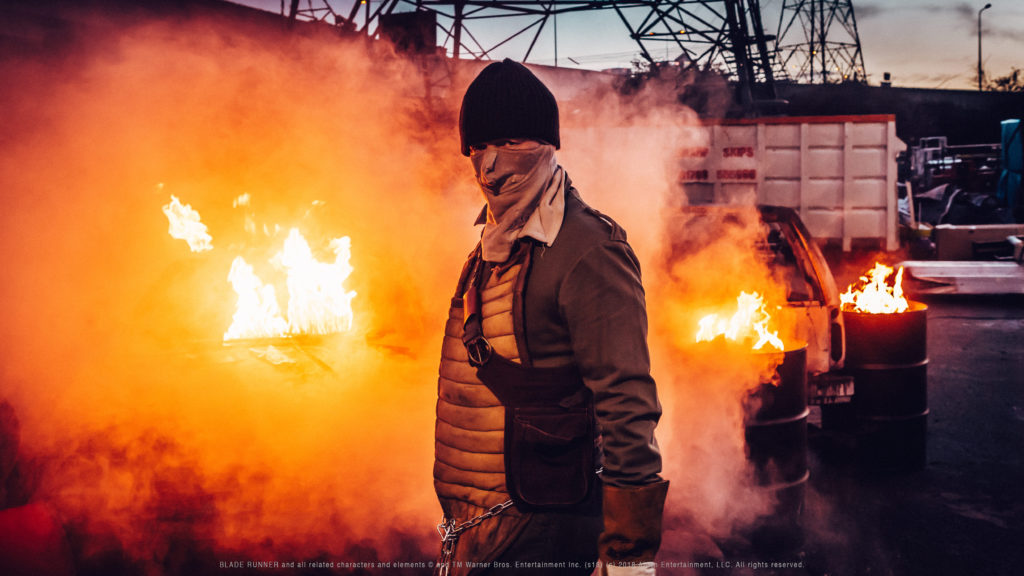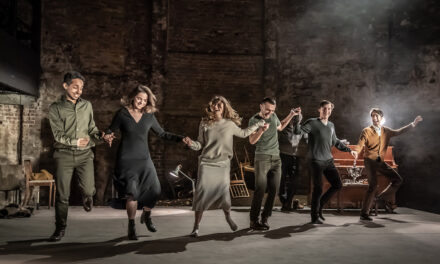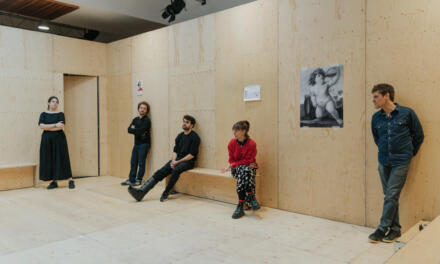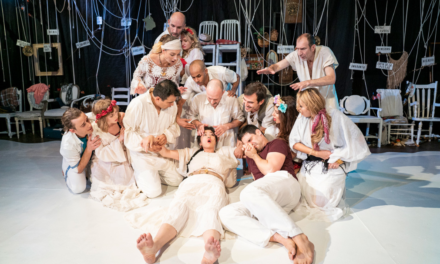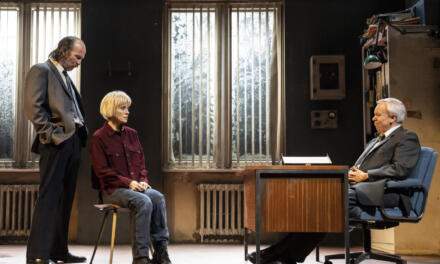Creating large-scale cultural experiences in abandoned spaces, Secret Cinema fuses film, music, theatre, and installations where audiences explore ultra-immersive worlds in which fiction and reality blur. In 2007, Secret Cinema introduced site-specific, immersive cultural experiences. Breaking films–and recently music albums–into their constituent parts and marrying narratives with play-along action, Secret Cinema is a unique participatory social experience. Fueled by a desire to fill the void left by an over-saturated technological world, it invites audiences to lose themselves in serendipitous, imaginary environments that challenge the way we perceive culture and social interaction. To date, over 520,000 people have attended Secret Cinema’s events.

Photo provided by the company
The experience begins as soon as you purchase your ticket, as you receive the confirmation email with follow-up instructions, from the narrative brand, Utopia, positioned as an entity of Tyrell Corporation. This email will prompt you to visit the website, where you are assigned a personalized character, new name, job, storyline, dress code, and other paraphernalia you will need for the evening. The costume guidelines are specific to the assigned job description; characters include LAPD, Private Investigators, Utopia staff, and Replicants and Scavengers. Thankfully, there is a shop where you can purchase everything necessary. It is admirable that even though this is a very-well-planned business, the shop only sells “in world” items that you might need for the experience. It could be selling merchandise such as Blade Runner action figures, T-shirts with the title of the movie, mugs, etc., and people would absolutely buy them because this experience is designed around a cult movie that has its own very committed fandom…but that would break the immersion. To create the best possible immersion is evidently the highest priority for a Secret Cinema production.
After some fun navigating the possibilities of the online shop, I opt for a blue wig, blue feathery eyelashes, and a feathery cape. The wig has already scared my son before I leave the house, and that is before the wind has turned it into a blue Donald Trump on a helipad imitation. The eyelashes, on the other hand, look fantastic once I manage to get them on but are so uncomfortable that I ditch them once the film begins so that I can watch it unhindered. The feathery cape was perfect.
Why are costumes that important? The costume and its preparation is an essential part of the experience; it builds anticipation and contributes to your own experience and that of others during the show.
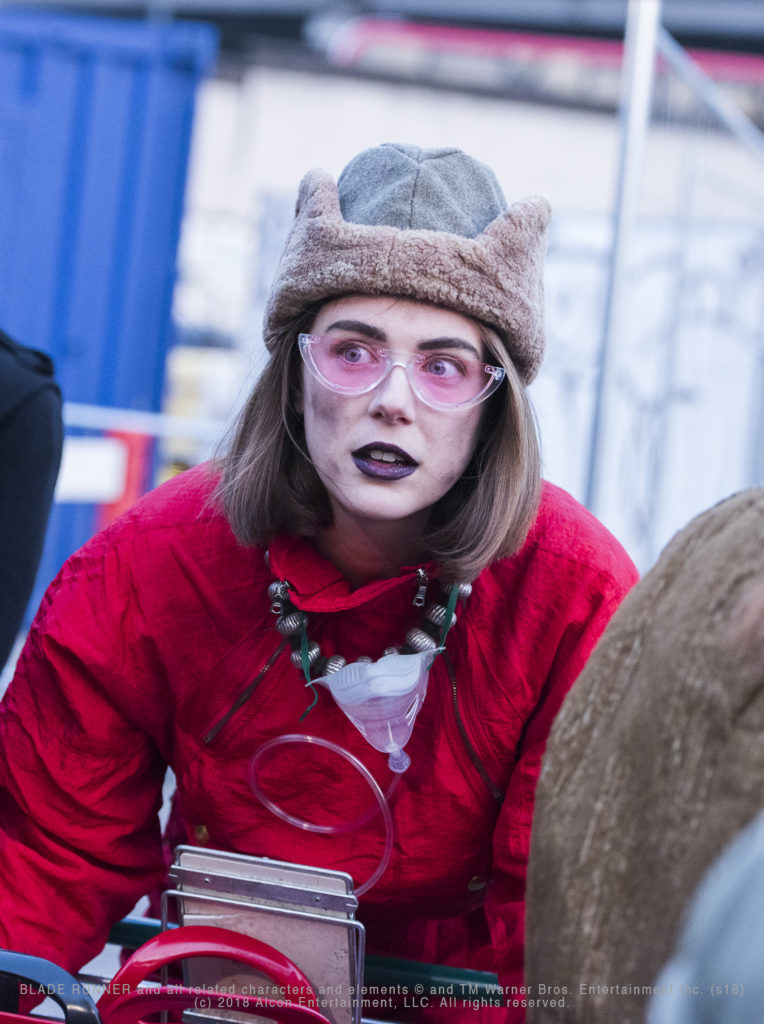
Photo provided by the company
In Hamlet On The Holodeck: The Future Of Narrative In Cyberspace, Janet H. Murray analyzes the dramatic satisfaction of participatory stories and considers what would be necessary to move interactive fiction from the formats of childish games and confusing labyrinths into a mature and compelling art form. She states that in immersive experiences the audience has to work harder to suspend their disbelief than they would in a regular theatrical experience.
Having a role in the story makes you more skeptical, which breaks the suspension of disbelief, so the costume makes it much easier to immerse oneself in the richly detailed world inspired by the iconic world of Blade Runner and to interact with the actors on site. It encourages interactions with other visitors and actors and appears to help the audience feel at ease in the environment.
Once I arrived at the Tube station where I was supposed to meet, I find myself thoroughly eying up other costumes of visitors, but once I pass the entrance of the venue, within the marvelous context created by Secret Cinema, the costumes render everyone characters in the Blade Runner world, from carnivalesque street cyberpunks to geneticists, blade runners, and replicants, and it is impossible to distinguish performers from audience members.
In addition to that, a Secret Cinema experience encourages maximum audience interactivity and participation. Even making you move in a different way, such as passing through tiny doors, which they did in Star Wars, or **** ********* ******** (there is stuff happening I can’t tell you about) in this Blade Runner; the physical reaction creates the emotion. They make your whole body participate in the experience and therefore feel it and believe it.
…there is no being behind doing, effecting, becoming; “the doer” is merely a fiction added to the deed—the deed is everything.
― Friedrich Nietzsche, On the Genealogy of Morals
We are no longer audience members; we adopt the gamer’s point of view. According to the Bartle taxonomy of player types on character theory, we could say that Secret Cinema is built for the Explorers and Socializers, which makes it truly unique. Unlike other immersive experiences–including Punchdrunk, where audience members wear masks obliterating any possibility of socialization and discouraging interaction with each other and the actors–Secret Cinema is focused on both the exploration of the world around you and the sociability, and they create the environment and the opportunities for you to do that.
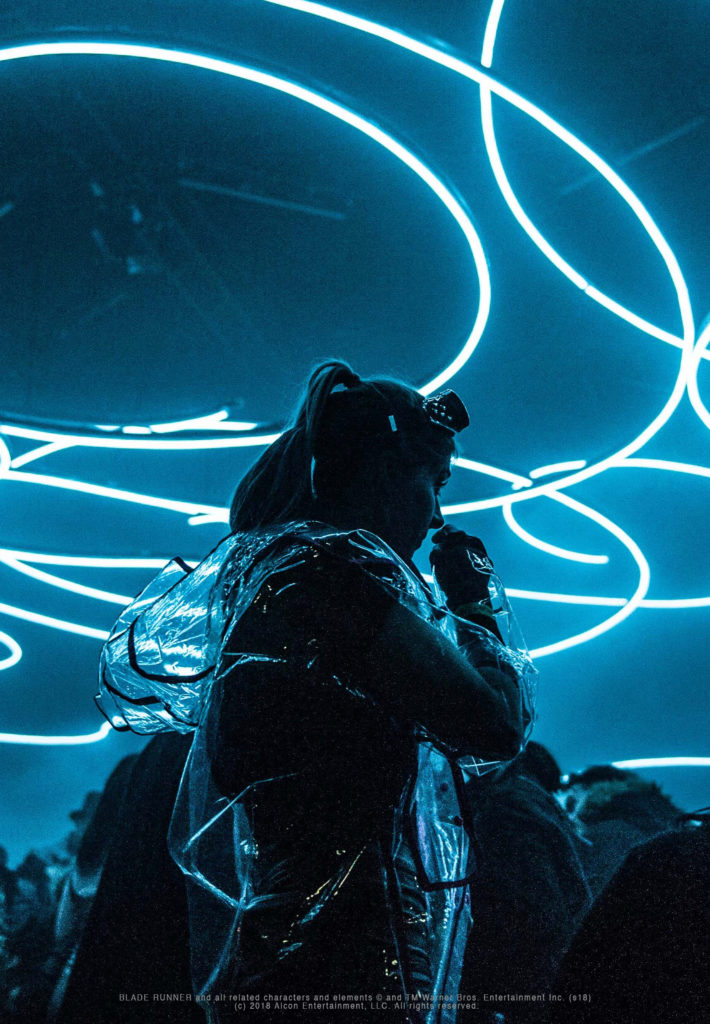
Photo provided by the company
Looking at this production considering the four pillars of contemporary theatre–immersion, interaction, participation, and transmediation–Secret Cinema is truly immersive and interactive: there is an exchange of experiences, the actors react to our reactions, and there is a personal consequence but it is not participatory, as your participation doesn’t change the development, the structure or the ending. It is also transmedia as, if you follow Secret Cinema on their social media accounts, new hints and data will be sent to you and enhance your experience.
As the evening progresses I definitely wish I had come earlier to have more time to explore this surprising and fun world before the film starts, because it is elaborate and detailed. Based on my ticket tier and job title I am assigned a specific task, but I run out of time before I can accomplish my mission, which was trying to guide me through this experience and involve me in a variety of strange, thought-provoking and fun adventures that go far beyond watching a movie.
So if you think Secret Cinema is trying to answer the question “What can we deliver at the cinema that you can’t get at home?” you’d be wrong. Secret Cinema is not about the movie but about building a community, and it’s closer to immersive theatre than to immersive cinema. Why? Immersive cinema is watching a movie in a more immersive environment that we are used to, but you are still there for the movie, such as watching Shark in a pool. Immersive cinema can and does exist without performers because the main event is the movie itself.
Secret Cinema is closer to immersive theatre because, as I said, it creates a staging with actors that build up performative moments, and the movie is not the end game of the experience or the reason why you’re there. The experience is not articulated around you watching the movie. The important part is not the story but you.
As the film begins, another layer of the work appears. The effort to create a world around a movie becomes literal. The movie is supported by lighting effects and performances, around the screens. Some of these effects work extremely well to support the atmosphere of the film, others don’t seem to add anything to the viewing experience other than distraction. In these instances, the otherwise thorough immersion is interrupted–maybe because the performances are not adding any narrative elements beyond them being off-screen.
This experience not only gives new life to a classic movie but also makes visitors stop and think differently about the message this movie was trying to convey in the first place. In the case of Blade Runner the blurring of distinctions between humans and machines, and the exploration of what it means to be human in that context, seems to have reached a new relevance in the light of recent advancement in artificial intelligence. This is emphasized by the time the film takes place in, 2019. Experiencing and watching the then futuristic world that Ridley Scott created in 1982 for 2019 adds another interesting layer to the experience.
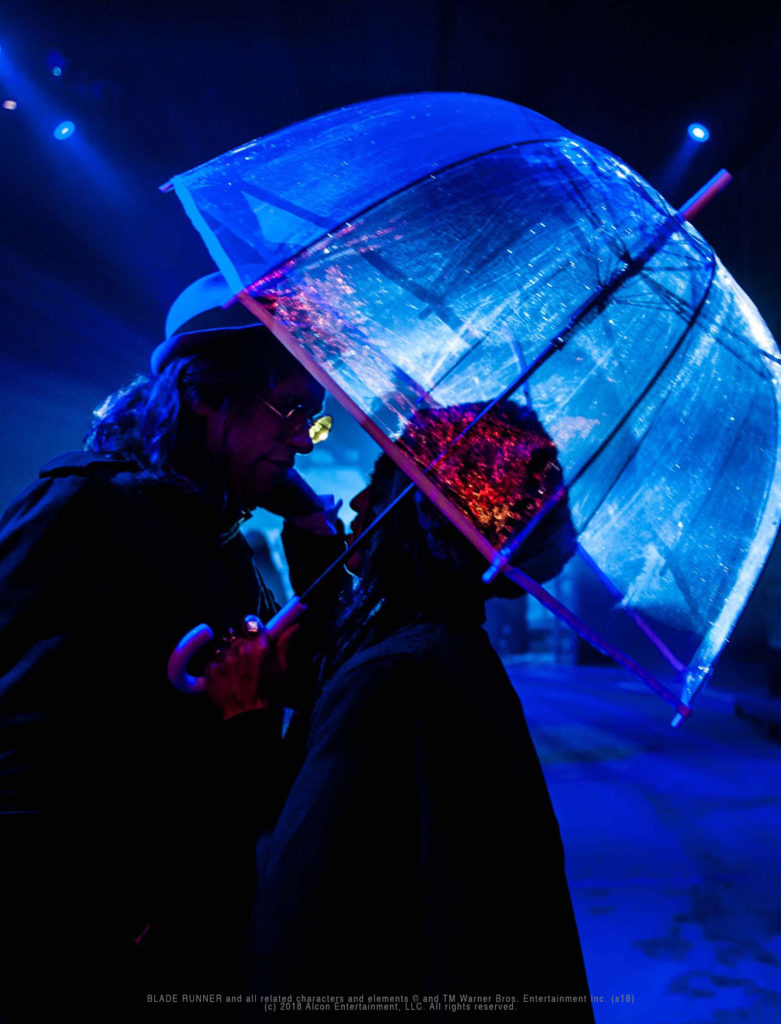
Photo provided by the company
I cannot help but compare the vision to the now and again with my own memories of watching the film the first time and my thoughts about that vision to the future then. It can be argued that by participating in the immersive world before watching the movie you experience your thoughts and emotions as being compounded. This is helped by not being able to use your phone, which had to be sealed in a bag upon your entering, which now allows for a very rare time without distraction from the outside world.
These stylized and illusional spectacles cause boundaries between the real and the artificial to blur, and the virtual and physical world to converge, creating a vast offering of hyper-real experiences. It appears that for the audience, such illusions are as valid as the original if they surpass reality; spectacle, entertainment, theatre, and culture become one.
Blade Runner is the fifth Secret Cinema production I have attended, and over the years they have become increasingly elaborate. Whichever Secret Cinema production you attend, it will always retain its secrecy…from what happens inside to the location and movie itself you’ll always be surprised. Blade Runner is truly spectacular. Most of them were fun and exciting adventures. Shawshank Redemption, however, was rather less fun but cold, wet and intimidatingly unfriendly. Very much in line with the depicted prison experience in the film. But who would not want to spend their evening on a spaceship playing UV table tennis, like in Prometheus, or dance with roller girls in a dystopian satirical world that emerges in a thirteenth-floor office block, as in Brazil, or drink cocktails in a 1920s speakeasy disguised as a laundry, as in Miller’s Crossing?
You still have until July 8th to dress up and immerse yourself in Blade Runner: The Final Cut–A Secret Live Experience. Run for your ticket as if Deckard were chasing you because the Secret Experiences sell out quickly.
For more information on Secret Cinema presents Blade Runner – The Final Cut: A Secret Live Experience, please visit https://www.secretcinema.org/
This article was written by Beatriz Cabur in collaboration with Eva Helberger and Belén Santa-Olalla
This post was written by the author in their personal capacity.The opinions expressed in this article are the author’s own and do not reflect the view of The Theatre Times, their staff or collaborators.
This post was written by Beatriz Cabur.
The views expressed here belong to the author and do not necessarily reflect our views and opinions.

